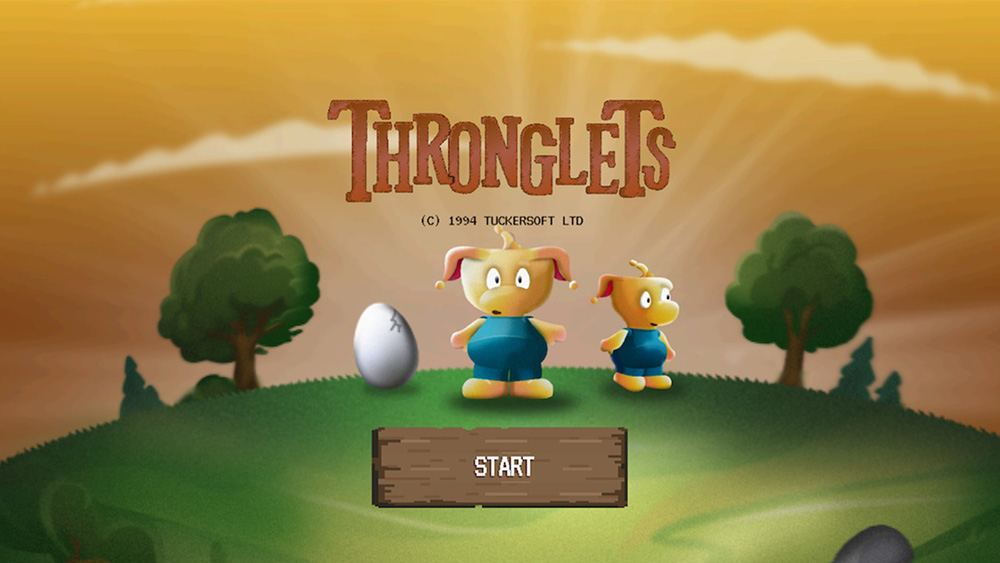15 printing terms every designer needs to know
Confused by printing terms such as pigments, RIPs, and solvents? Keep this jargon-busting glossary close by...
The world of print design can be a confusing one for those coming from other design disciplines, not least because of all the unfamiliar printing terms and concepts that have evolved gradually over the hundreds of years along with the art and science of printing.
But getting your head around it is vital if you're to ensure your designs look the same on paper as they do on screen. Here we explain some of the most important printing terms to help get you started on your journey to becoming a print guru...
- Also read: Print packaging 101: everything you need to know
01. Colorimeter
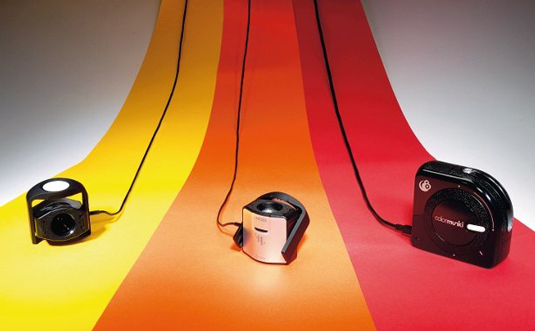
A colorimeter is a device used for measuring the intensity and hue of the light emitted from a computer monitor. The instrument sits flat on the screen, and has a light-reading cell in its underbelly. This information is analysed to build a profile that calibrates the monitor.
Professional printers include built-in colour calibration, which tests and measures the response of an ink and paper combination and creates an instant profile.
Calibration before each run compensates for changes in ambient temperature, pressure and humidity, and variations in stock.
02. DPI
DPI stands for dots per inch. A higher DPI is better.
DPI values don't compare across technologies. Inkjets typically print at around 700dpi for basic proofing, 1440dpi for typical output and 2560dpi for very high quality. Higher DPI values are slightly smoother, but take longer to print and use more ink.
Get the Creative Bloq Newsletter
Daily design news, reviews, how-tos and more, as picked by the editors.
03. Dye-based inks
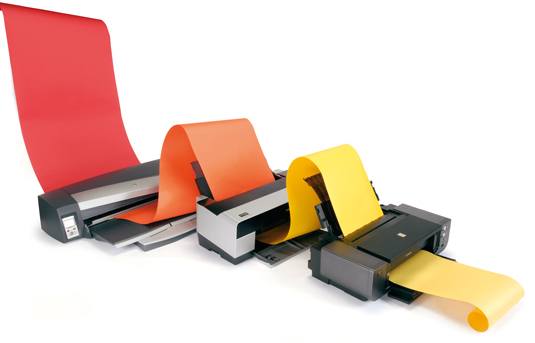
Dye-based inks stain media directly rather than printing on a substrate, and are often water-soluble. Colours are brighter than for pigment inks (see 07), but they fade faster. Dye-based inks are often used for photo printing, and sometimes for proofing.
04. Dye sublimation
'Dye-sub' is an alternative printer technology used for fabric printing and other specialised applications. Some inkjet models, especially those by Epson, can be used with dye-sub inks. Prints can be made directly onto fabric or transfer paper, and then fixed into the fabric with a heat press.
05. Large format
Also known as 'wide format', these are big industrial printers. Smaller units print up to A2 on sheets or rolls; the largest models print on rolls up to 64 inches wide. Prices range from around £2,000 to more than £20,000. They typically use the same technology as desktop printers, but are bigger and should be more reliable.
06. Pantone coverage
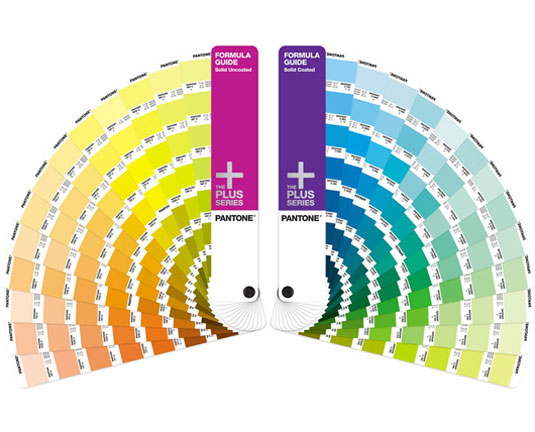
This is a measure of how accurately a printer can reproduce the standard Pantone swatch colours. Modern printers can output 98 per cent of the Pantone range. This is good enough for accurate proofing, but this range also depends on the paper used.
07. Pigment-based inks
Most inkjets use pigment-based inks, with up to 12 distinct colours. Pigment inks are used for archival art printing, and for black-and-white or lightly toned colour photography. Colours tend to be less saturated than dye-based output, but are more resistant to UV light and fading.
08. RIP
Raster Image Processor - a software accessory that works as an enhanced printer driver, producing the highest possible quality output for text, bitmap graphics and vector art. An RIP isn't essential, but it's a useful add-on for large format work.
09. Solid ink
Ink supplied in solid form and melted into a wax before printing. Mostly used by Xerox, it's good for quick office output and basic proofing, but not so much for art or photo printing. Large format versions used to be available, but are difficult to find now.
10. Solvent inks
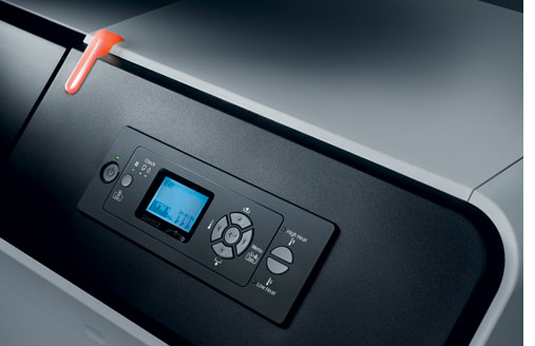
Used by Epson in its largest uber-expensive GS6000 model, these are effectively dye-based inks with enhanced UV stability for printing on fabric, vinyl and canvas. Like other dye-based inks they soak into and stain the medium they're printed on.
11. Cut sizes
The smaller sizes of paper, such as A4, derived by cutting down the 'parent' sizes used by commercial printing presses.
12. Finish
The feel and texture of any paper. Laid finish is machine-made paper that emulates handmade; embossed finish presses a pattern into the surface of the paper; matte papers have a dull surface well-suited to text - the list goes on
13. Trim size
The dimensions of a printed page after any excess edges have been cut away. Be careful not to confuse this with cut size.
14. Saddle stitching
The process of folding sheets in half, with staples or stitching in the middle. The page count must be divisible by four.
15. Perfect binding
Sounds a lot more glamorous than it is: a paper block is glued into a wrap-around cover, just like in a regular paperback book. PUR binding is a variant on this that uses extra-strength, temperature-resistant glue.
Going further
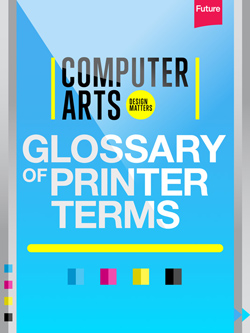
The Computer Arts Print Glossary is a unique mini app for iPhone and iPad. It gives you quick access to common, and not so common, printer terms, from 'Deckle Edge' and 'Against the Grain' to 'Cheating the Plate'. So if you ever get flustered by a print technician's jargon, a sneaky glance at your phone will save any blushes!
Find out more details, and how to get hold of the app here.
Liked this? Read these!
- Create a perfect mood board with these pro tips
- The ultimate logo design guide
- Discover what's next for Augmented Reality

Thank you for reading 5 articles this month* Join now for unlimited access
Enjoy your first month for just £1 / $1 / €1
*Read 5 free articles per month without a subscription

Join now for unlimited access
Try first month for just £1 / $1 / €1

The Creative Bloq team is made up of a group of design fans, and has changed and evolved since Creative Bloq began back in 2012. The current website team consists of eight full-time members of staff: Editor Georgia Coggan, Deputy Editor Rosie Hilder, Ecommerce Editor Beren Neale, Senior News Editor Daniel Piper, Editor, Digital Art and 3D Ian Dean, Tech Reviews Editor Erlingur Einarsson, Ecommerce Writer Beth Nicholls and Staff Writer Natalie Fear, as well as a roster of freelancers from around the world. The ImagineFX magazine team also pitch in, ensuring that content from leading digital art publication ImagineFX is represented on Creative Bloq.
